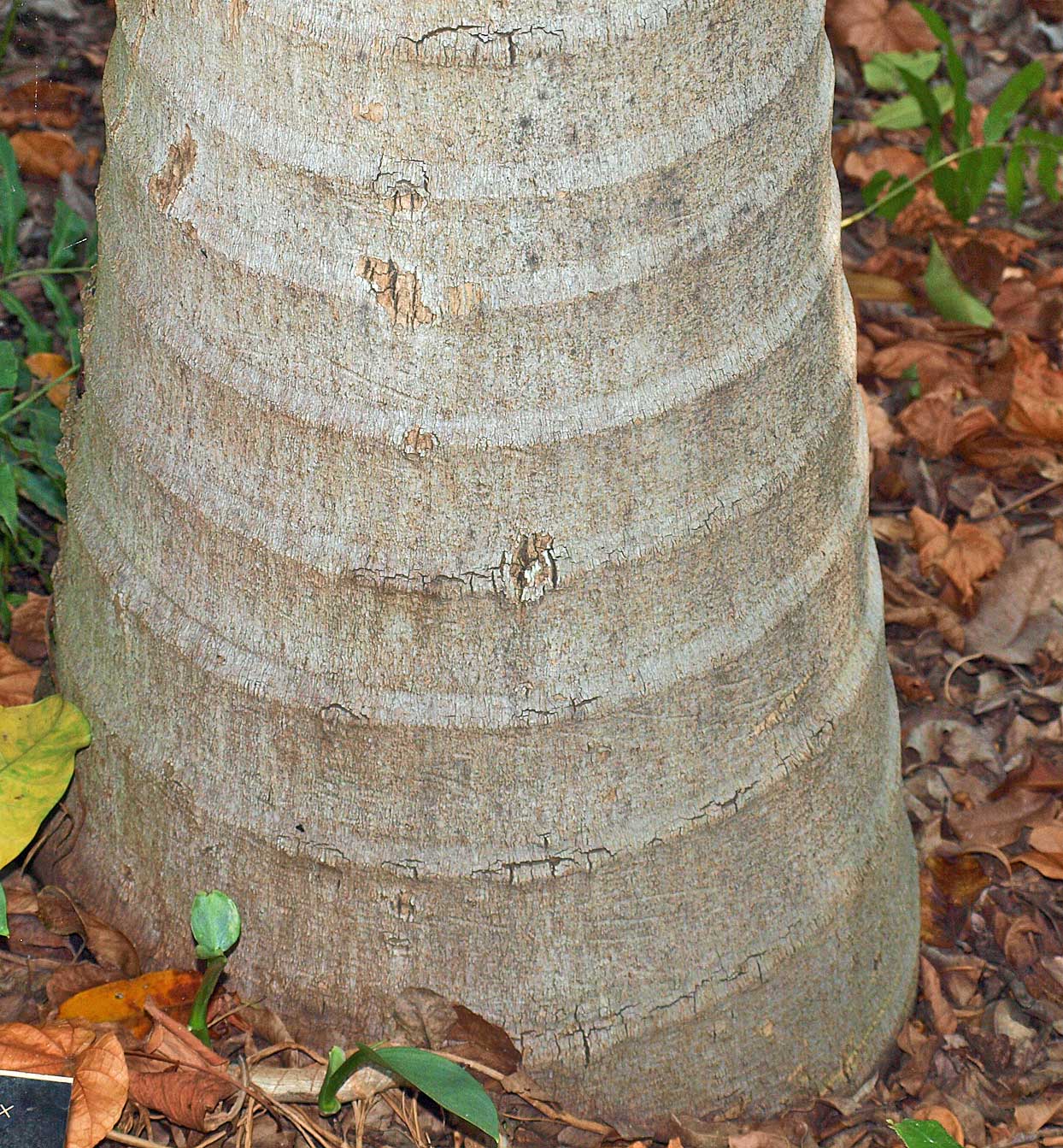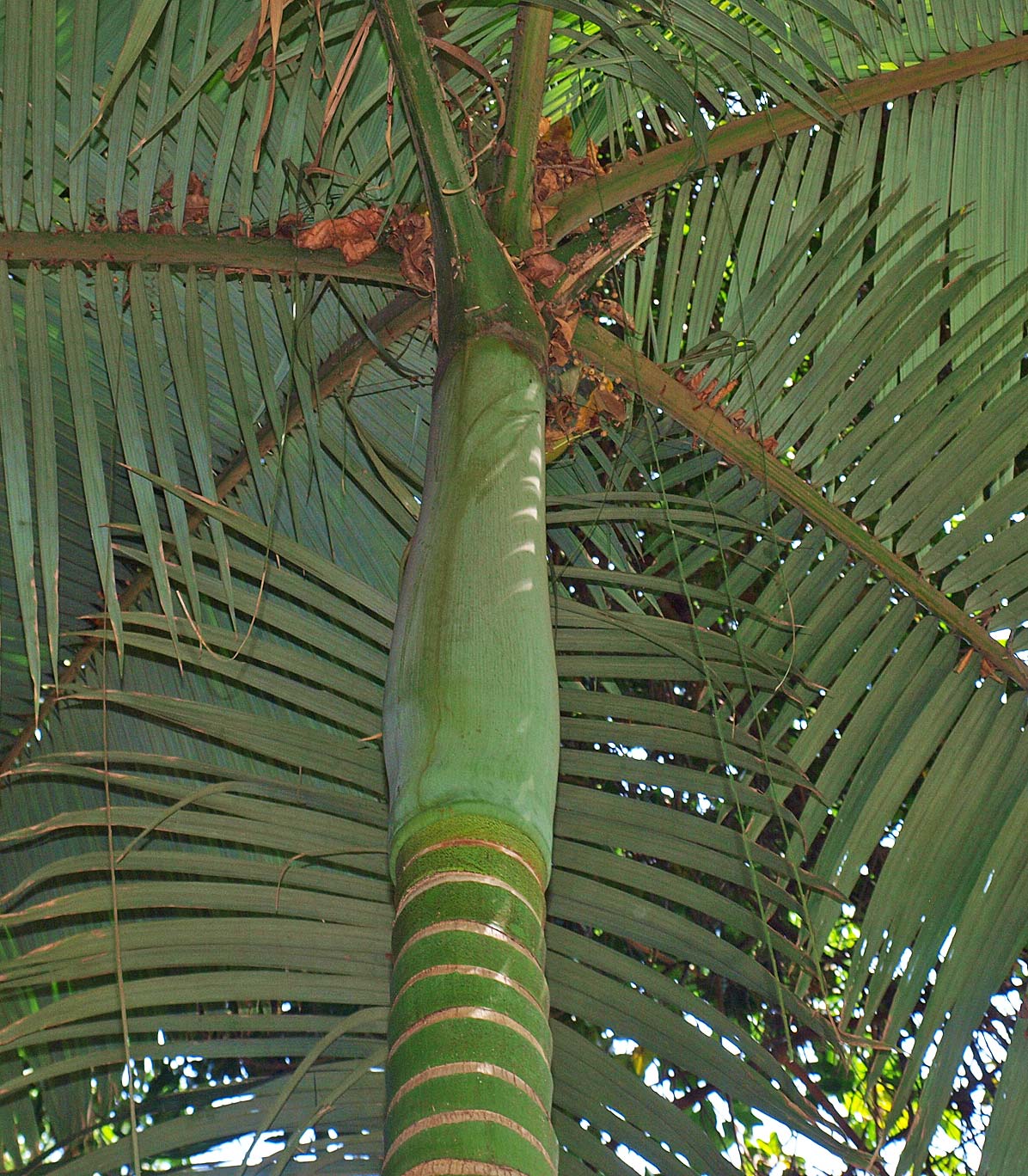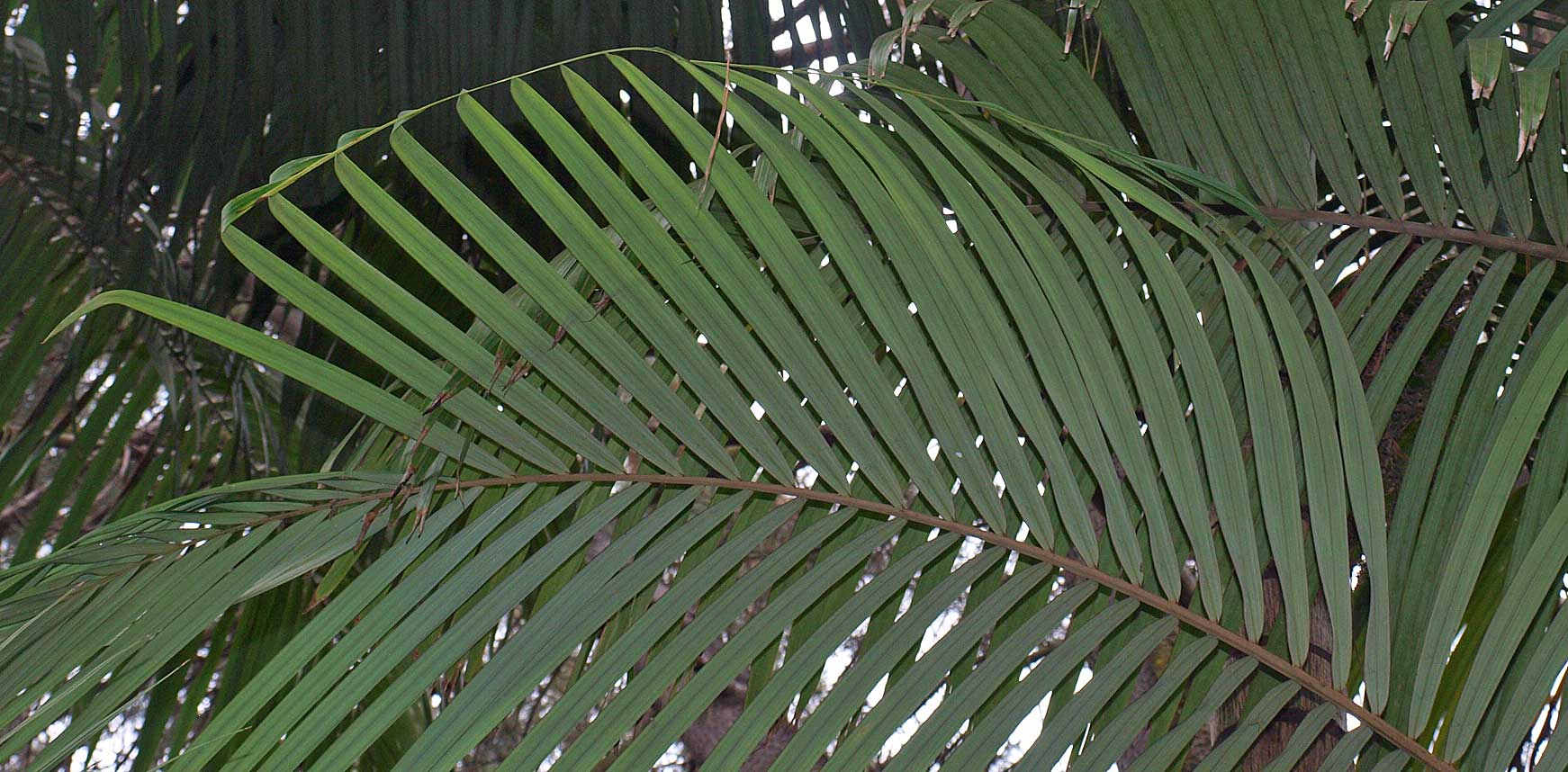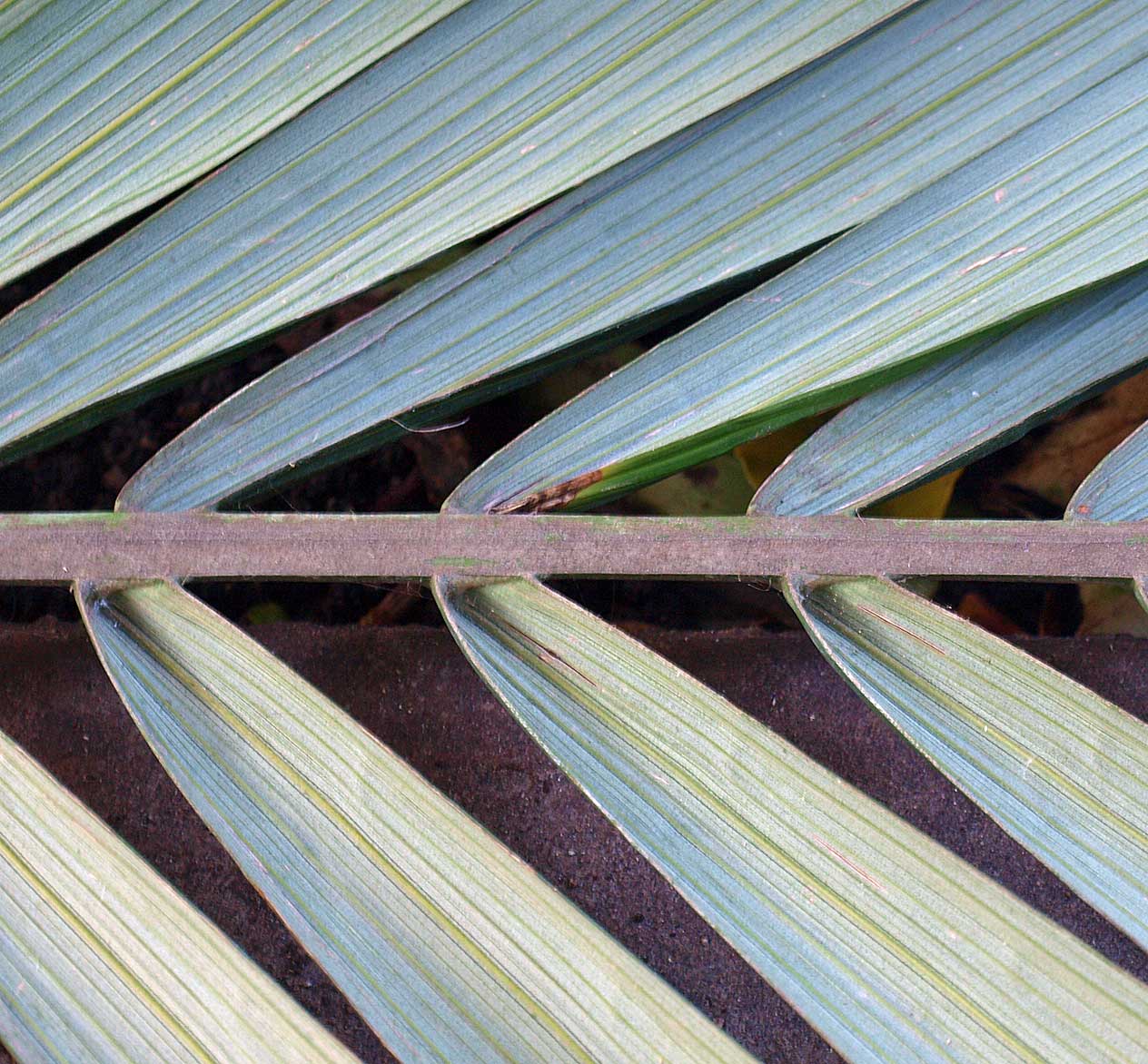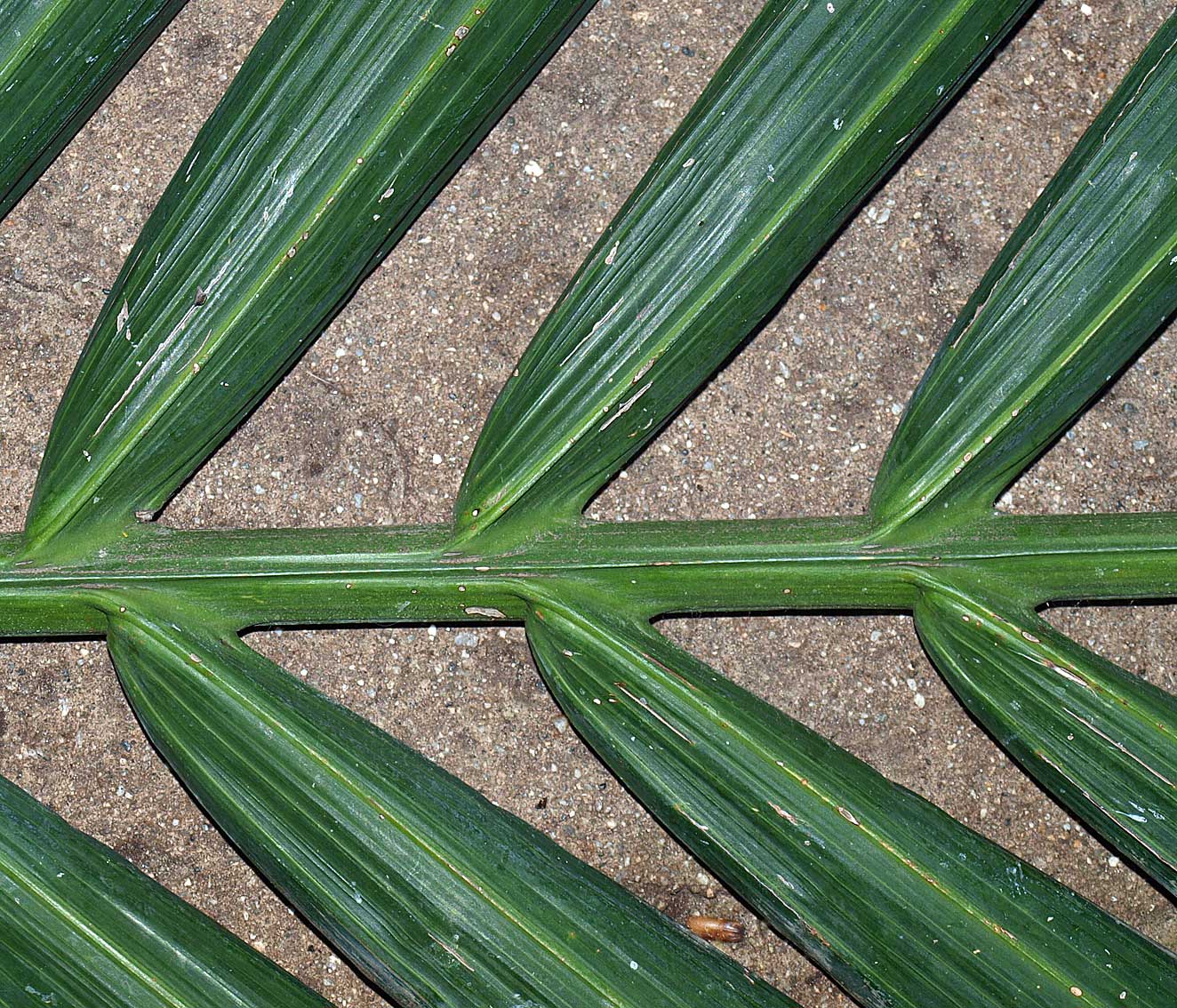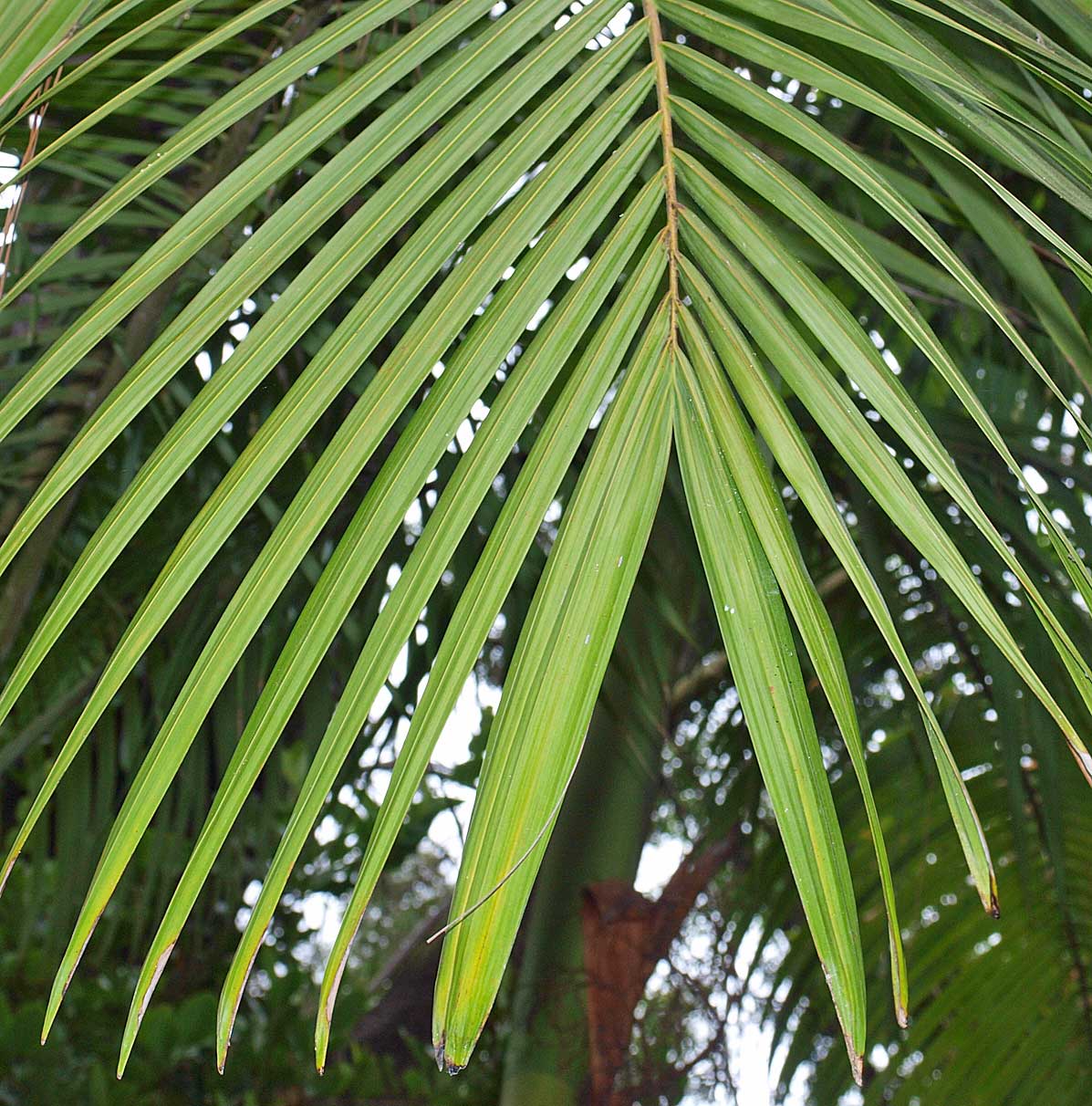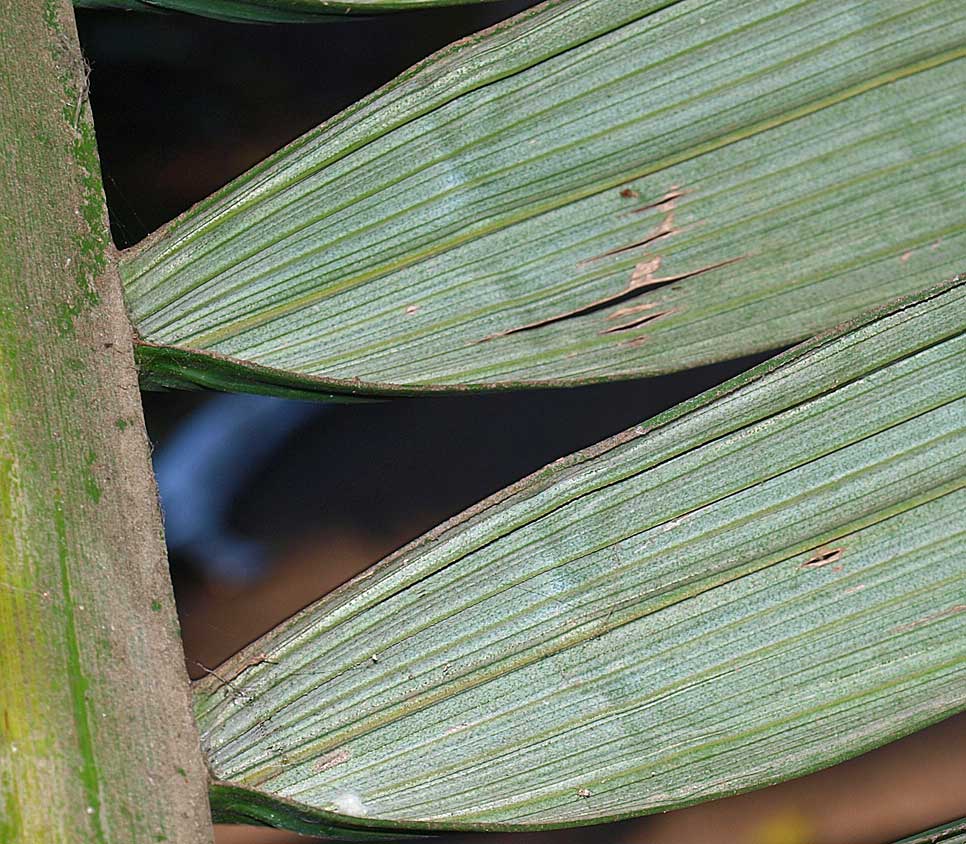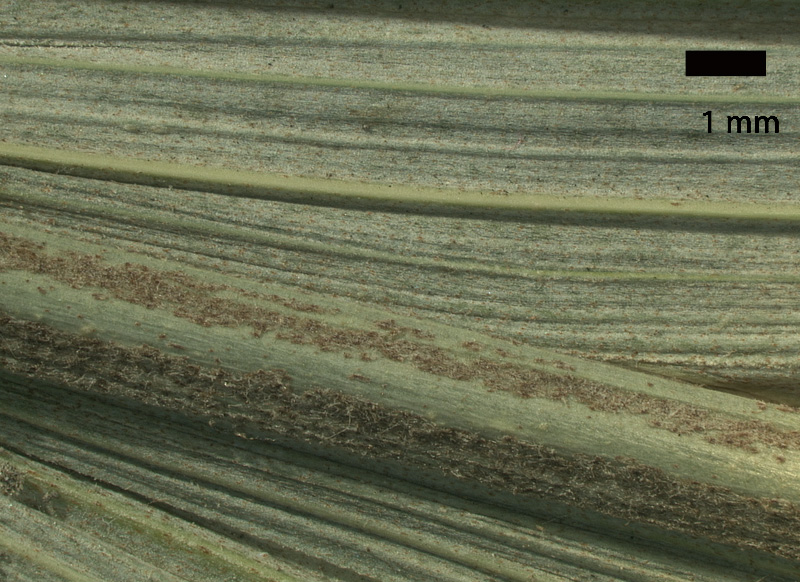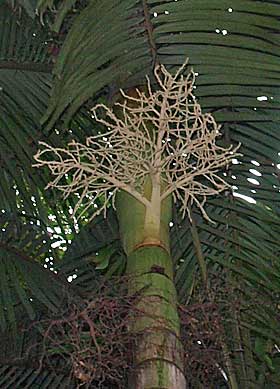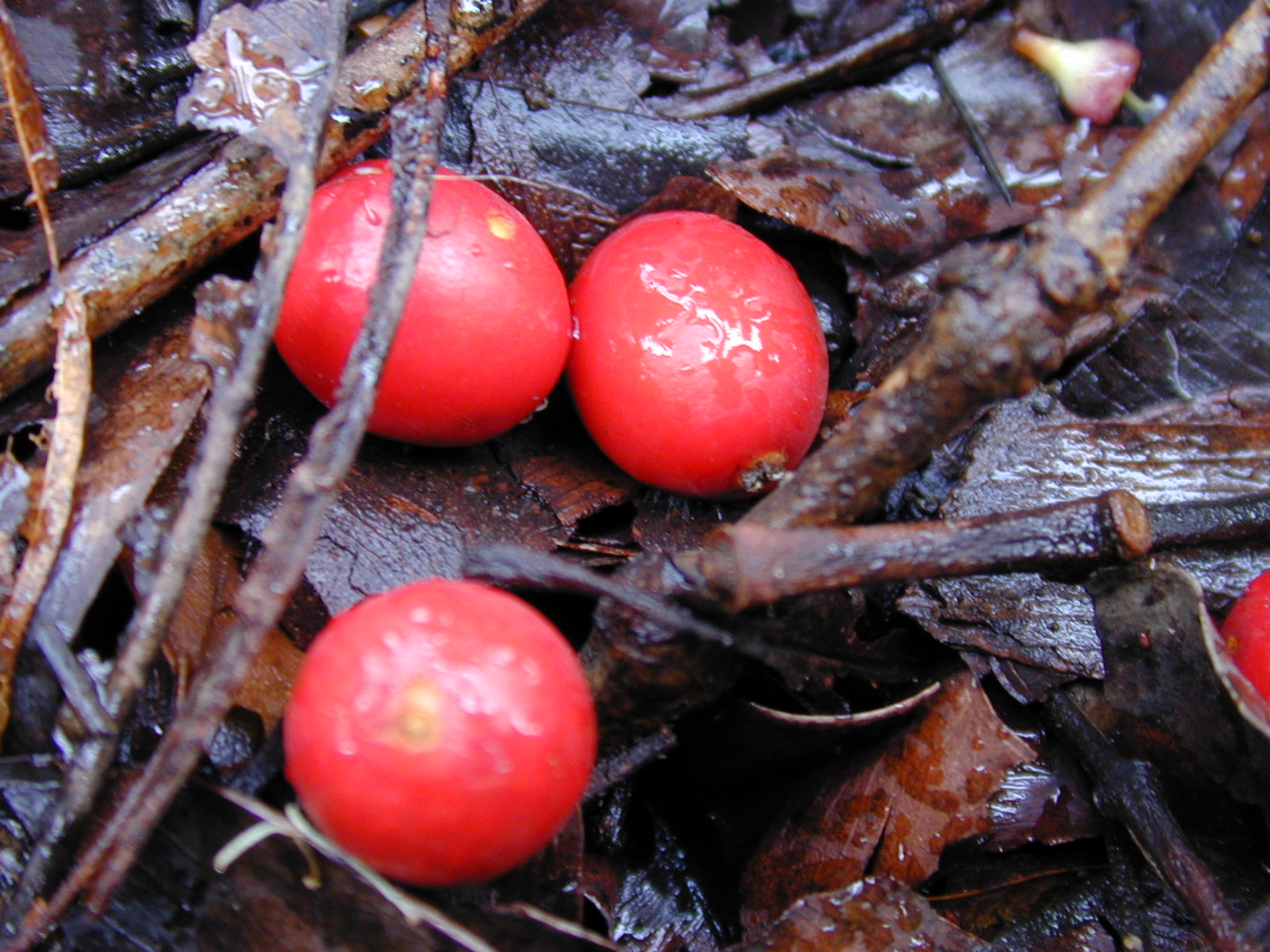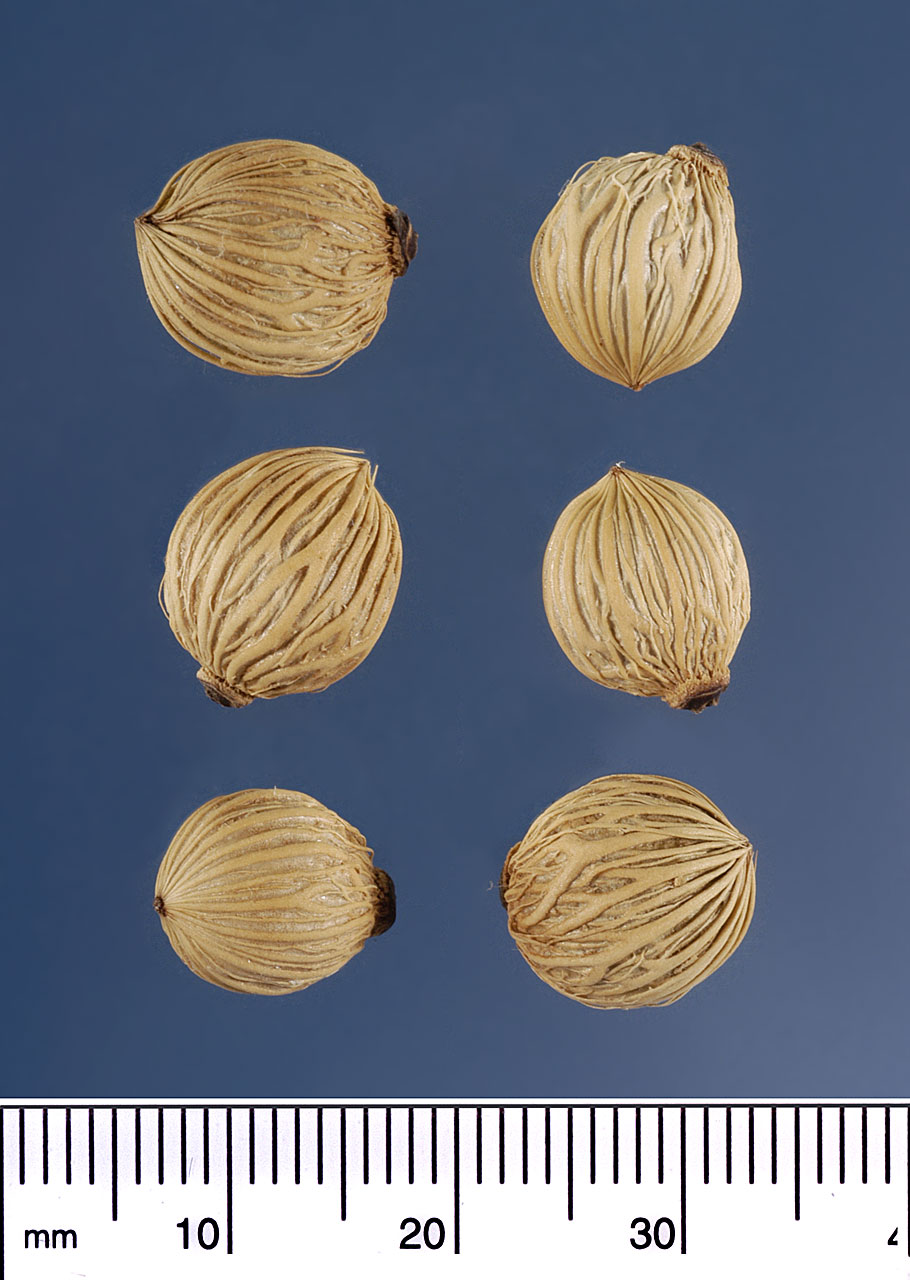Archontophoenix alexandrae
|
Archontophoenix alexandrae slightly bulging base of stem |
|
Archontophoenix alexandrae rings of leaf scars |
|
Archontophoenix alexandrae crown shaft |
|
Archontophoenix alexandrae newly emerging leaf with reins |
|
Archontophoenix alexandrae abaxial leaflet attachment to rachis |
|
Archontophoenix alexandrae adaxial leaflet with midrib and secondary veins |
|
Archontophoenix alexandrae apical leaflets |
|
Archontophoenix alexandrae abaxial leaflet with midrib and secondary veins |
|
Archontophoenix alexandrae close view of abaxial leaflet with midrib and secondary veins |
|
Archontophoenix alexandrae inflorescence |
|
Archontophoenix alexandrae fruit (Starr Image 001205-0026). Photograph courtesy of Forest & Kim Starr, starrimages@hear.org |
|
Archontophoenix alexandrae seeds. Photograph courtesy of Mariana P. Beckman, DPI |
Common name
king palm, alexandra palm, king alexander palm
Description
Stems: Solitary, slender, gray, to 15 m tall and up to 25 cm in diameter, bulging at the base, with ridged, "stair-step" rings of leafleaf:
in palms -- the leaf blade (which is usually divided into leaflets or leaf segments), the petiole (or leaf stalk) and the sheath (which forms the attachment of the leaf to the stem)
scars. Leaves: Pinnate pinnate:
like a feather; palms with pinnate leaves usually have compound leaflets attached to a rachis, although a pinnate leaf may be entire with pinnate veins (e.g., <em>Chamaedorea metallica</em>)
to 2-3 m long, with a rachisrachis:
an extension of the petiole through the blade of a pinnate leaf to which leaflets are attached
that twists near the midpoint and linearlinear:
term to describe leaves and leaflets that are narrow with nearly parallel margins; like a line
leaflets growing in a single plane. The crown shaftcrown shaft:
a cylinder of clasping leaf sheaths toward the apex of the stem, found in some pinnate-leaved palms (e.g., <em>Wodyetia bifurcata</em>)
is up to 1 m long, somewhat swollen at the base, and varying in color from light green to dull purple or reddish-brown. The rachisrachis:
an extension of the petiole through the blade of a pinnate leaf to which leaflets are attached
is more or less covered with reddish-brown tomentumtomentum:
a covering of closely matted or fine hairs on plant leaves
on the underside. Upper leaflet surface is grassy green to dark green; undersurface, whitish-gray or glaucousglaucous:
bluish-grey or -green
with prominent secondary veins. Flowers and fruits: Inflorescenceinflorescence:
the reproductive structure of a flowering plant, including palms, consisting of flowers and associated bracts
less than 1 m long with many pendulous branches. Male and female flowers are greenish white to cream-color and are borne on the same inflorescenceinflorescence:
the reproductive structure of a flowering plant, including palms, consisting of flowers and associated bracts
. The red, ovoid fruits are 1-1.5 cm long and have remnants of the stigma at the apex.
Diagnostic features
Field: Erect, solitary palm with "stair-step" rings and bulging base; slender crown shaftcrown shaft:
a cylinder of clasping leaf sheaths toward the apex of the stem, found in some pinnate-leaved palms (e.g., <em>Wodyetia bifurcata</em>)
. Leaflets in a single plane, green above and silvery below. New leaves are sometimes bronze-colored when they emerge.
Lab: Silvery scales on leaflet undersides and reddish-brown tomentumtomentum:
a covering of closely matted or fine hairs on plant leaves
on the rachisrachis:
an extension of the petiole through the blade of a pinnate leaf to which leaflets are attached
, along with prominent secondary veins
May be confused with
Dictyosperma album is similar, but Archontophoenix alexandrae has leaves with silvery-white undersides and a drooping inflorescenceinflorescence:
the reproductive structure of a flowering plant, including palms, consisting of flowers and associated bracts
, while Dictyosperma album leaves are green on both sides, and the inflorescenceinflorescence:
the reproductive structure of a flowering plant, including palms, consisting of flowers and associated bracts
is erect in bud, then the branches become recurved.
Distribution
Native to Eastern Australia, often in wet areas
Additional comments
Palms in this beautiful genus are used in landscaping, but they can be sensitive to the stresses of transplanting.
Scientific name
Archontophoenix alexandrae H.Wendl. & Drude
Family
Arecaceae/Palmae
Synonyms
Ptychosperma alexandrae F. Mueller


